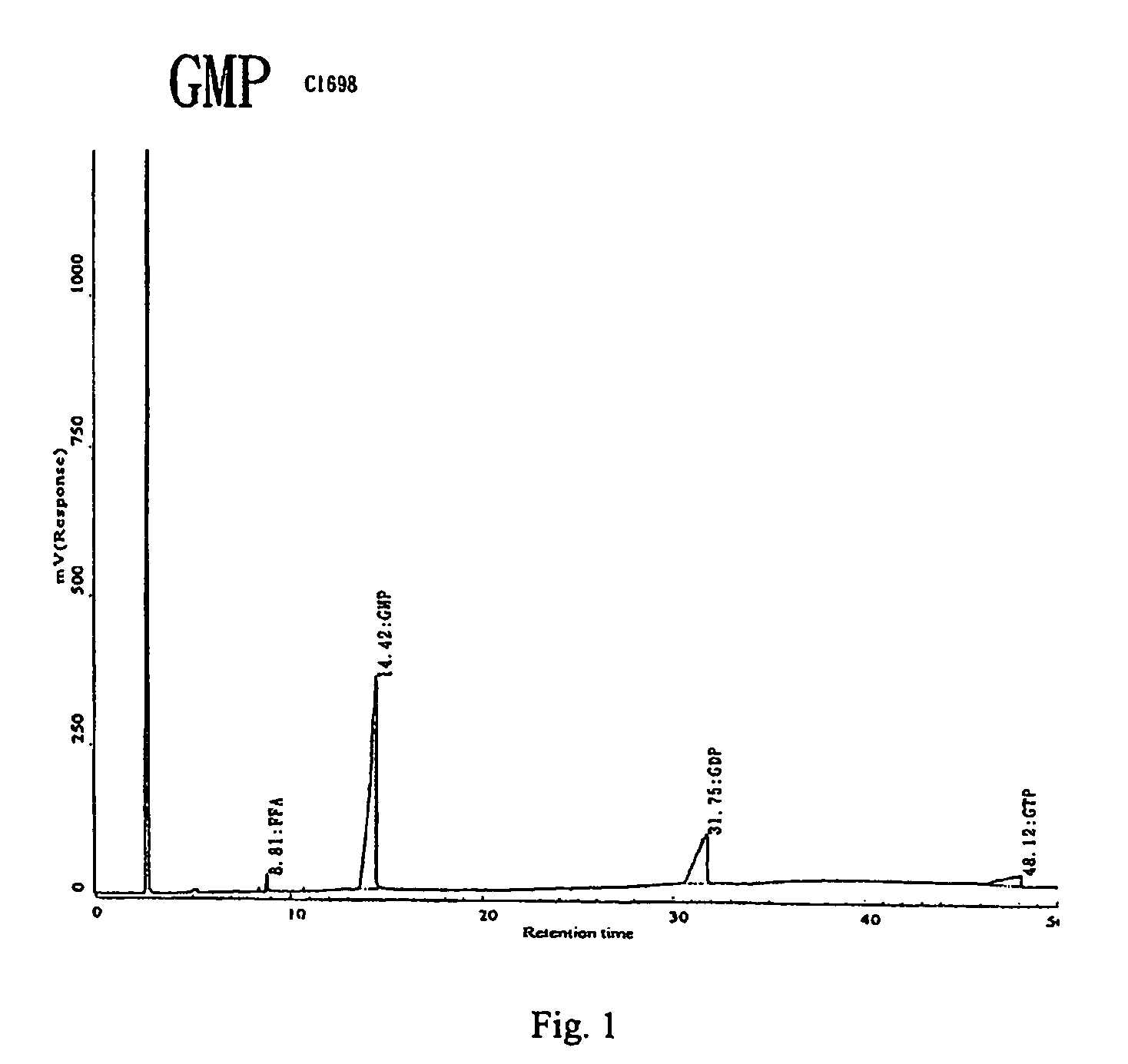Partial acyl glyceride based biowaxes, biocandles prepared therefrom and their preparation
a technology of acyl glyceride and biocandles, which is applied in the field of biowax, can solve the problems of difficult control, limited candle wax compounding percentage, and inability to completely burn paraffin, and achieve the effect of facilitating the healthy development of the carbon cycle on earth
- Summary
- Abstract
- Description
- Claims
- Application Information
AI Technical Summary
Benefits of technology
Problems solved by technology
Method used
Image
Examples
examples
A. Gas Chromatographic Analysis of PAG
[0038]GC Model: YOUNGLIN ACME 6000M GC
[0039]GC Conditions:[0040]1. Column: QUADREX fused silica capillary column;[0041]007-65HT-25W-0.1F, 0.32 mmID[0042]2. Detector: FID[0043]3. Carrier Gas: Nitrogen[0044]4. Oven Temperature:[0045]1) 80° C. (Hold 1 min), and to 240° C. in a rate of 20° C. / min;[0046]2) 240° C., and to 360° C. in a rate of 4° C. / min;[0047]3) 360° C. (Hold 11 min)[0048]5. Injector Temperature: 280° C.[0049]6. Detector Temperature: 360° C.[0050]7. Determination Range: 6×103 mV
[0051]Preparation of Samples:[0052]Homogeneously mixing 0.2 gm of sample with 5 cc chloroform.
[0053]Analysis Conditions:[0054]1. Sample Content: 0.2 μl[0055]2. Analysis Time: 50 mins
B. Components for the Preparation of Waxes
[0056]Component 1: Paraffin wax, supplied by Taiwan Wax Co., Ltd., has the physical properties listed on Table 1.
TABLE 1Physical PropertyTest MethodValueM.P., ° C.ASTM D8759.8Needle Penetration at 25° C., mmASTM D132115.5Kinetic Viscosity at...
examples 1 to 13
[0067]The container candles were prepared according to the components and contents listed on Table 11.
D. Burning Test
[0068]The burning performances of biocandles prepared from partial acyl glyceride (PAG) based biowaxes were carried out by following the steps below:[0069]1. numbering and weighing each of container candles having various amounts of components;[0070]2. placing the container candle separated by a distance of 100 mm on the experimental table;[0071]3. placing a plaster slab 75 mm above the table, to observe the smoke emitting from the candles, when burning;[0072]4. igniting the container candles and starting timing; measuring the flame heights of each container candles as soon as possible, when the wax is molten around each of the wick (about 5-6 minutes);[0073]5. measuring the flame heights at an interval of one hour;[0074]6. measuring the temperatures at the highest point of inside flame for each container candle after 60 minutes;[0075]7. weighing each container candle...
PUM
 Login to View More
Login to View More Abstract
Description
Claims
Application Information
 Login to View More
Login to View More - R&D
- Intellectual Property
- Life Sciences
- Materials
- Tech Scout
- Unparalleled Data Quality
- Higher Quality Content
- 60% Fewer Hallucinations
Browse by: Latest US Patents, China's latest patents, Technical Efficacy Thesaurus, Application Domain, Technology Topic, Popular Technical Reports.
© 2025 PatSnap. All rights reserved.Legal|Privacy policy|Modern Slavery Act Transparency Statement|Sitemap|About US| Contact US: help@patsnap.com



